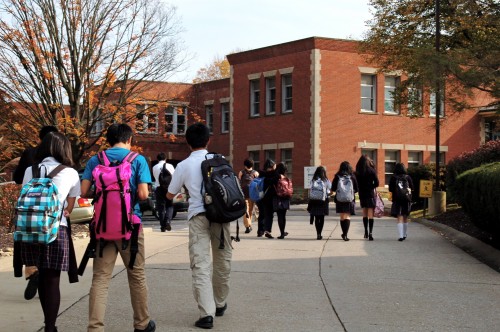The Ontario government is launching a new initiative to make higher education accessible and affordable for all students. In its budget, the provincial government unveiled the Ontario Student Grant—a project aimed at giving all Ontarians equal opportunity to obtain a university degree. Beginning in 2017, students from low-income families (households that earn $50,000 or less per year) will be able to go to university for free. The government’s message here is clear: The right to education should be available to all, regardless of socioeconomic status.
Well, it’s about time. Undergraduate students in Ontario pay the highest average tuition fees in Canada—a whopping $8,691—that is nearly three times the average cost of tuition in Quebec. The financial stress on families can be so burdensome that students are dissuaded from attending university.
The Ontario Student Grant will undoubtedly improve the equality of educational opportunities. Yet the correlation between income and quality of education begins much sooner than post-secondary schooling. Studies have shown that underprivileged students are at an educational disadvantage from as early on as primary school. To truly impact the lives and potential of future students, the government must look to reduce inequalities in primary and secondary levels of education.
Socioeconomic inequality impacts education from early childhood. Low-income students are at an inherent disadvantage, and lack many resources for learning. Students that comes from a family in Canada’s top 10 per cent (households with an annual income of $200,000 or more) are likely to have highly educated parents with the ability (and time) to support and encourage them academically. In contrast, a student in Canada’s bottom 10 per cent (households with an annual income of below $30,000) is more likely to have less educated parents that are either unemployed or making minimum wage ($11.25 per hour in Ontario). This student will not experience many of the privileges of the more affluent student.
In theory, under Ontario’s public school system, a wealthy child and a poor child should have equal opportunities to receive an education. Practically, this is not the case. As the income gap widens, neighbourhoods are increasingly defined in terms of socioeconomic status. In Toronto, the epicentre of income inequality in Ontario, there is a relationship between wealth and test scores in schools. High-scoring elementary schools are generally concentrated in wealthier areas, while in low-income neighbourhoods, a larger percentage of students struggle with reading, writing, and math. Sixty per cent of students in the gifted programme come from the three highest income deciles, while a mere 11 per cent come from the three lowest deciles.
Inequitable fundraising also plays a large role in perpetuating discrimination in the education system. In Ontario, public schools in the top 10 per cent fundraise as much money as those in the bottom 81 per cent combined. These schools are able to offer enriched experiences and learning materials, increasing the overall quality of education for students. Students reap the benefits of their parents’ affluence in the form of new iPads for the classroom or expensive overnight field trips, putting those who cannot afford these extra perks at a severe disadvantage. Due to the lack of adequate resources and support, a higher percentage of children in low-income schools take applied courses in high school, limiting their chances of admission into university. The inequality only grows over time.
Students that produce lower test scores or struggle in school as a result of this socioeconomic disadvantage may lack the self-confidence and drive necessary to achieve a university degree. The exceptional students that are able to retain a zest for learning will face limited potential for success. Whether or not tuition is subsidized, students that have not received appropriate teaching will be less likely to be admitted to a prestigious university programme, or have the skills to succeed there if they do get in. Subsidizing tuition provides a bandaid solution to the self-perpetuating issue of inequality that is deeply entrenched in the education system.
With the Ontario Student Grant, the government will uplift the futures of many students. Still, in order to truly equalize the playing field, the government must work to strengthen the education system from the bottom up by ensuring that educational quality is not dependent on the income of children’s parents.









